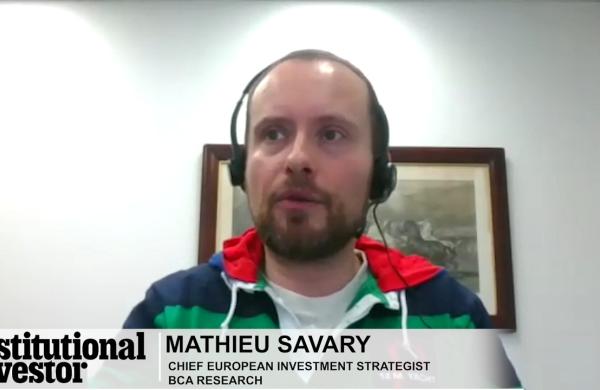The ratio has held steady for the past decade: 99 out of every 100 U.S corporations with more than 100 employees offer some sort of retirement plan; only one does not -- and probably doesn't intend to at this point. In fact, the only companies starting up 401(k)s tend to be small ones.
Most plan providers, however, view this market with deep skepticism. They are convinced that small-business owners think of a plan start-up as an administrative burden and an unwanted expense. And the providers don't like plan economics any better than do the entrepreneurs: Until a 401(k) plan's average account balance reaches $15,000 to $40,000, it's unprofitable to run.
So why bother to pitch 401(k)s to small businesses? It can pay off for some patient providers. "With a start-up, everyone is betting that you can maintain the relationship until it's profitable," explains David Musto, Prudential Retirement's senior vice president in charge of this emerging 401(k) marketplace. Once plans achieve a critical mass, their operating margins are comparable to those of larger plans -- approaching 10 percent, reports Paramus, New Jerseybased consulting firm Sterling Resources.
Although many providers, especially mutual fund companies, still turn their noses up at microplans, a significant contingent, including Automatic Data Processing, Paychex and Principal Financial Group, have moved aggressively to grow their share of this niche over the past year.
That has accelerated an ongoing consolidation. In 2005 the top ten providers to 401(k) plans with less than $1 million boasted 33 percent of all assets, up from 25.3 percent in 2000, according to consulting firm 401kExchange.com. The midmarket (plans with $10 million to $100 million in assets) had already gone through a consolidation. The top ten providers held a 51 percent market share in 2005, up from 37 percent in 2000.
"Look for the same pattern in the micromarket -- that the top ten will have 50 percent or more by 2010," predicts Fred Barstein, founder and CEO of 401kExchange.com. The overall 401(k) market is similarly consolidated, with the top ten providers claiming about 54 percent of assets.
Market leaders in the microplan market are primarily insurers: Principal (No. 1); John Hancock (No. 6); Financial Partners subsidiary American United Life Insurance Co. (No. 7); Great-West Retirement Services (No. 8); Nationwide (No. 9); and Hartford Financial Services Group (No. 10). The pure recordkeepers or payroll providers constitute the second-biggest group, with Bisys Retirement Services (No. 2), ADP (No. 3) and Paychex (No. 4). The only mutual fund company in the top ten, at No. 5, is Fidelity Investments, which has made a push to sell payroll processing and administrative services to small businesses in recent years.
Several other mutual fund companies, including AIM Investments and Massachusetts Financial Services Co., have pulled out of the small-plan market because they found the margins too skimpy or nonexistent.
Insurers fare better. Traditionally, they have been able to package investment products with higher fees than those of mutual fund firms. That is partially because insurers tend to rely more heavily on the brokerage industry to sell their products, creating the opportunity for several layers of fees.
Payroll providers, on the other hand, have electronic systems to manage 401(k) plans for small companies. And they already charge their small-employer clients for payroll and tax-paying services. Retirement plan services can conveniently and cost-effectively piggyback on payroll.
It takes $1,500 to $2,500 to set up a plain-vanilla 401(k) plan; annual costs average about $1,600 plus $30 per participant, according to Michael Callahan, a third-party administrator whose firm, Southington, Connecticutbased Pentec, administers about $3 billion in small-company retirement plan assets.
To earn a profit, mutual fund firms have generally required start-up plans to use only their proprietary in-house funds. Fidelity and OppenheimerFunds -- two of the few mutual fund firms operating in the microplan market -- each makes this obligatory. The market leader, Principal, says it claimed 10.2 percent of microplan clients in 2005, up from 8.8 percent in 2000. Laurel Shultz, managing director of emerging markets for the insurer, cites two factors to explain her company's success: technology -- "95 percent of all money transactions [payroll deductions, investment transfers and payouts] are done electronically" -- and its team of 40 wholesalers. Principal serves about 37,000 clients with less than $1 million in their 401(k)s and manages a total $11.04 billion in microplan assets.
The next three biggest providers -- Bisys, ADP and Paychex -- are all plan administrators that offer no investment management. ADP and Paychex are primarily in the payroll business. "We live in the micromarket," notes Anthony Tortorella, who heads sales for Paychex's retirement plan unit. "Some 85 percent of our clients are start-ups with no assets." The sole mandate of Tortorella's 240 salespeople is to sell 401(k) plans to small-business owners, most of whom already rely on Paychex to handle their payroll. In 2005, Paychex was administering 36,449 defined contribution plans -- all with assets of less than $1 million -- worth $5.9 billion.
Of the remaining top ten microplan providers, five of the six are insurers. The outlier is Fidelity, which has slipped three places from its No. 2 spot in 2000 and is striving to regain its share. In January 2005 it began selling its 401(k) services along with its payroll services. "We are just starting to get some real traction here," says Edmund Murphy, executive vice president of emerging corporate 401(k) markets. This year, he notes, Fidelity is expected to sell 500 payroll/retirement plans, up from 250 in 2004.
The critical element that makes the micromarket work for insurers but not for most mutual fund firms is the group annuity contract, with its parfait of fees. "The insurers can ask a mutual fund firm to add another 25 basis points to a fund's fees to list on the start-up plan platform, and the insurers can add other 'wrap' fees as well," explains 401kExchange.com's Barstein. These fees are deducted directly from participants' accounts. According to Barstein, participants in the plans often pay as much as 300 basis points in fees. "It's pretty tough to expect investment performance to cover that and leave much for the investor," he notes.
Barstein and others argue that group annuity contracts can be quite opaque. "Transparency is in the eye of the beholder," counters Pentec's Callahan, whose clients include insurers that offer group annuity contracts. The third-party administrator argues that the annual filing required by the Department of Labor -- the 5500 form -- clearly lists all fees that are paid out of participants' assets, and identifies the payees as well. The wrap fees are critical for the brokers who are selling retirement plans.
"I wouldn't take only 25 basis points on a plan with less than $1 million in assets," asserts Joseph Best, a retirement plan specialist with Unison, which is based in Minnetonka, Minnesota, and serves about 45 plans with roughly $80 million in combined assets. "Think about it: 25 basis points on an account with a balance of $25,000 works out to $62.50 in annual compensation."
Wachovia Retirement Services, which administers $70 billion in defined contribution assets from about 5,000 clients, prices its services with a variation on the group annuity fee. "We have a wrap fee that is asset-based, but it declines from 100 basis points for start-ups down to 10 basis points," explains Joseph Ready, who heads Wachovia's retirement group. That fee is posted on participants' statements, he adds.
"We see this marketplace as a real opportunity, in part because we think we can leverage our banking network to serve small employers," he says.
Ready and his colleagues are on track to increase Wachovia's small-plan assets by one third this year, to $530 million, up from about $400 million at the end of 2005. That kind of growth explains why some providers continue to think small.





